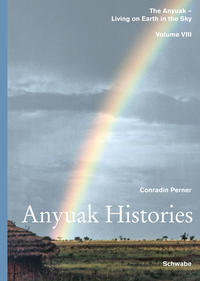
The monograph on the history and culture of the Anyuak is the result of more than five years of fieldwork (1976–1983). It is a well-documented, detailed and passionate description of an African people’s spiritual and material world, their culture and history. Myths, oral traditions, stories, maps, genealogies, recordings of tales, songs and music as well as a great number of photographs invite the reader to join in the journey through the universe of the Anyuak in order to make their own discoveries or simply to participate in the spiritual adventure. The Anyuak live on both sides of the border between South Sudan and South-western Ethiopia. They are relatives of the better known Shilluk, Dinka and Nuer, but have turned from cattle herders into fervent agriculturalists. The Anyuak are a highly intellectual, strong-minded and well-organised people who have created, in the middle of so-called wilderness, a centre of human civilisation. If their socio-political system is of a particular interest, their philosophy is equally fascinating: it centres on the human person and governs his or her relationship not only within human society but also with animals, earthly matters and spiritual forces. Thanks to their stubborn, almost desperate belief in the essential goodness of existence and the positive forces of life, the Anyuak have – in spite of all pressures from outside – up to now succeeded in preserving their cultural identity and maintaining their pride of being «pure human beings». The first four volumes of the monograph describe the sphere of the above (the sphere of transparency), the sphere of the below (the sphere of material existence, the earth) and the space between them (the sphere of human self-awareness and the period of personal existence). Volumes V and VI focus on the Anyuak village and its physical, social, judicial and political structures, and examine the lively sphere of collective experience under a forceful leadership, which embodies the community’s self-awareness. Volume VII focuses on the daily or seasonal activities of the Anyuak and investigates their economic and material values, in particular the social aspects of labour, such as solidarity, sharing within the community and cooperation. The book ends with a chapter on art which illustrates the Anyuak artistic self-awareness in all aspects of life. Volume VIII on the Anyuak History is the last part of the monograph. The narrative in this volume moves from mythological times to the times of migration. It explains reasons for the separation from relatives and explores the process of settlement. The modern part of history starts with the stories related by early travellers, describes the times of slavery, the relationship between the Anyuak and their neighbours and provides documents on the impact of foreign governments and the consequences of the first and the second civil wars in the Sudan. Myths, oral information and official records are significant documents for understanding the Anyuak historically as well as their relatives and indeed the colonial powers of the time. An extensive bibliography on the entire monograph concludes the information provided in this volume.